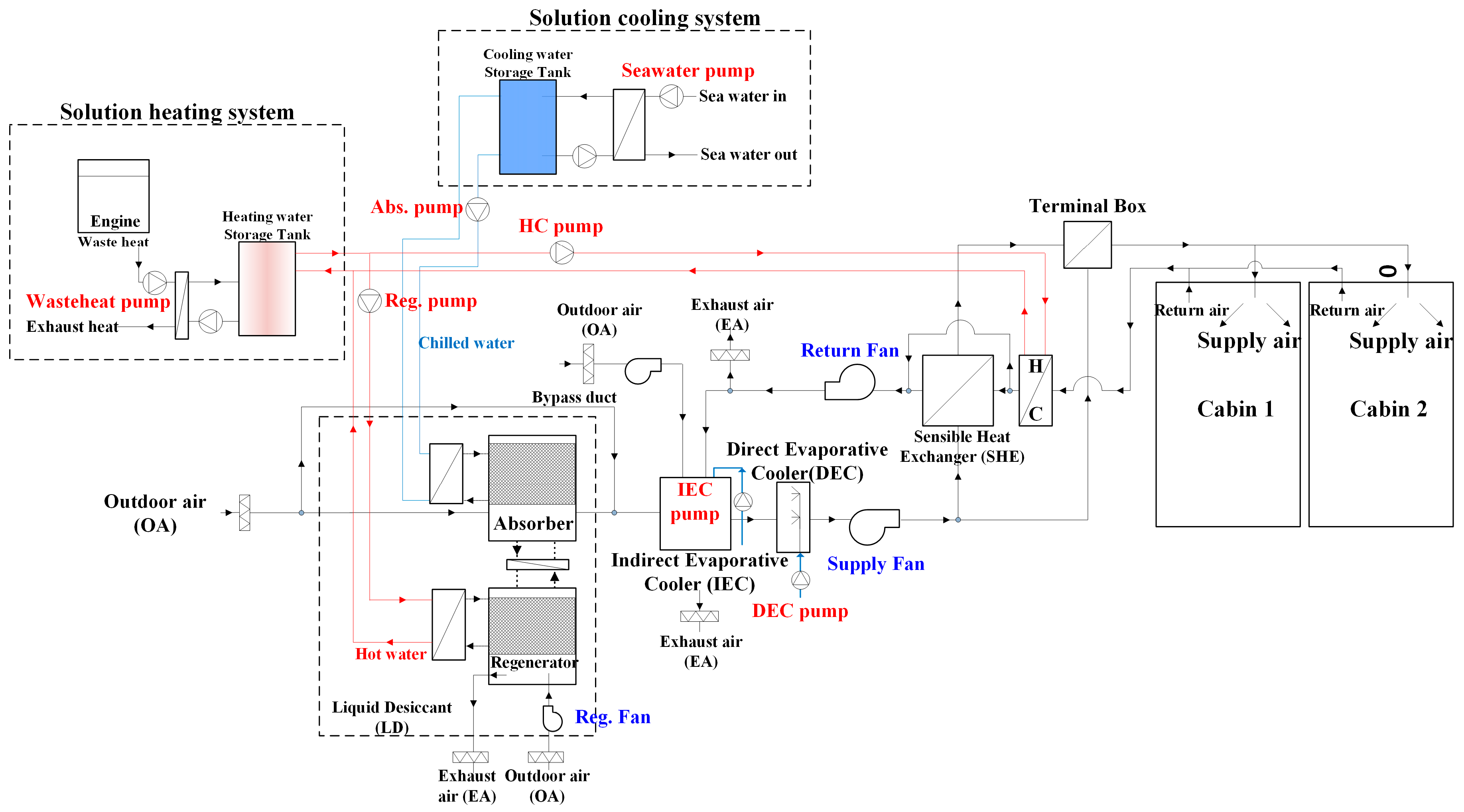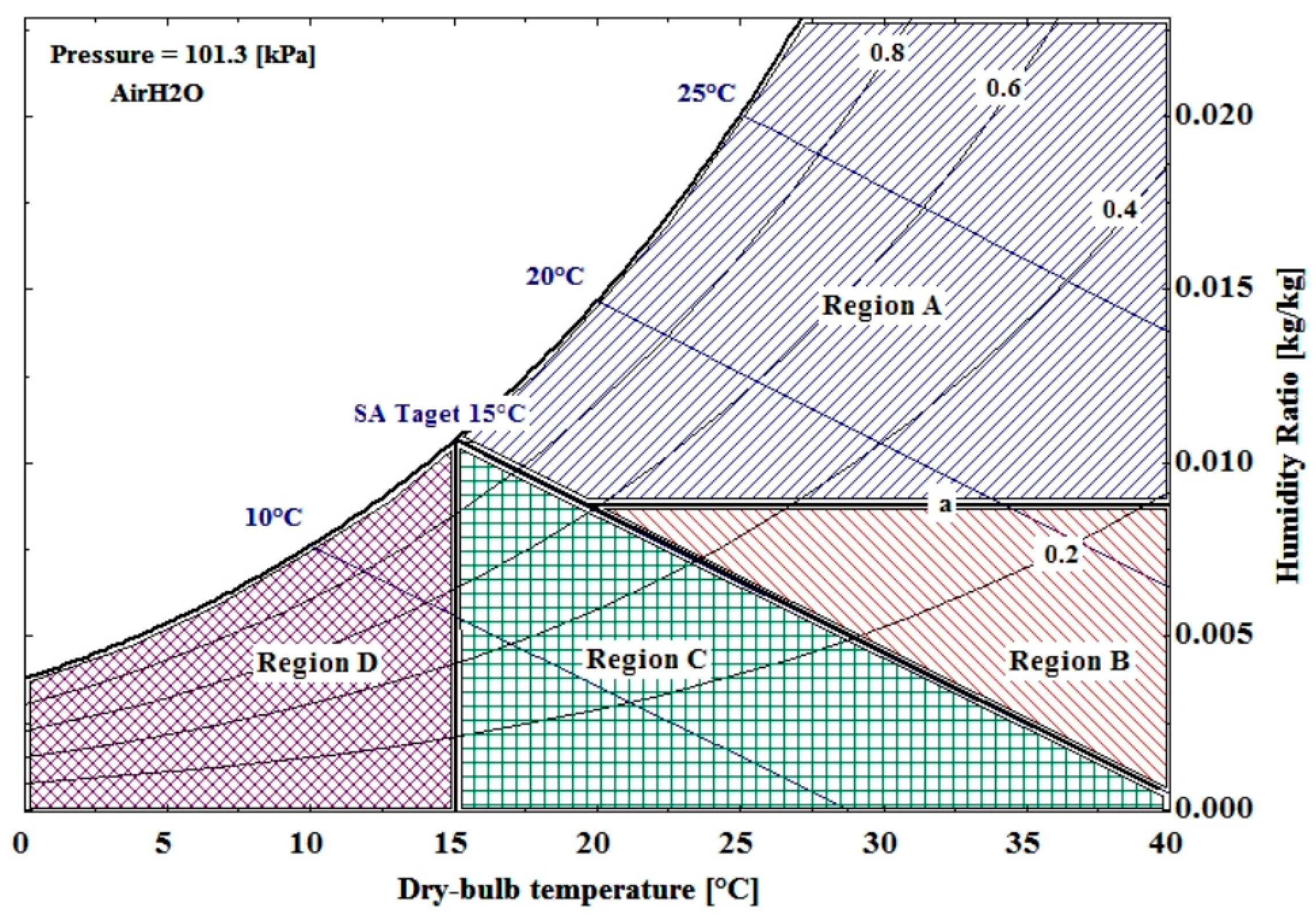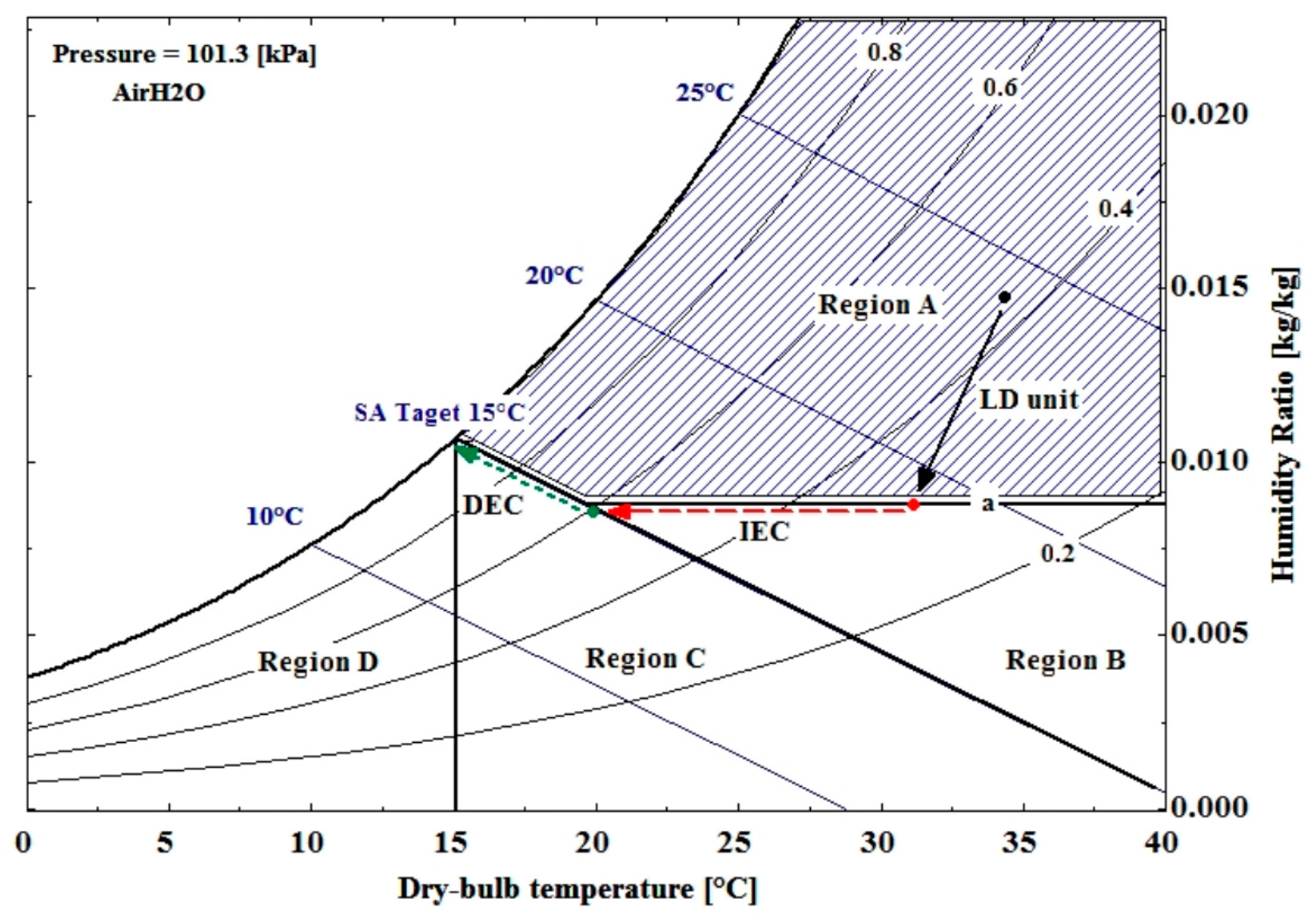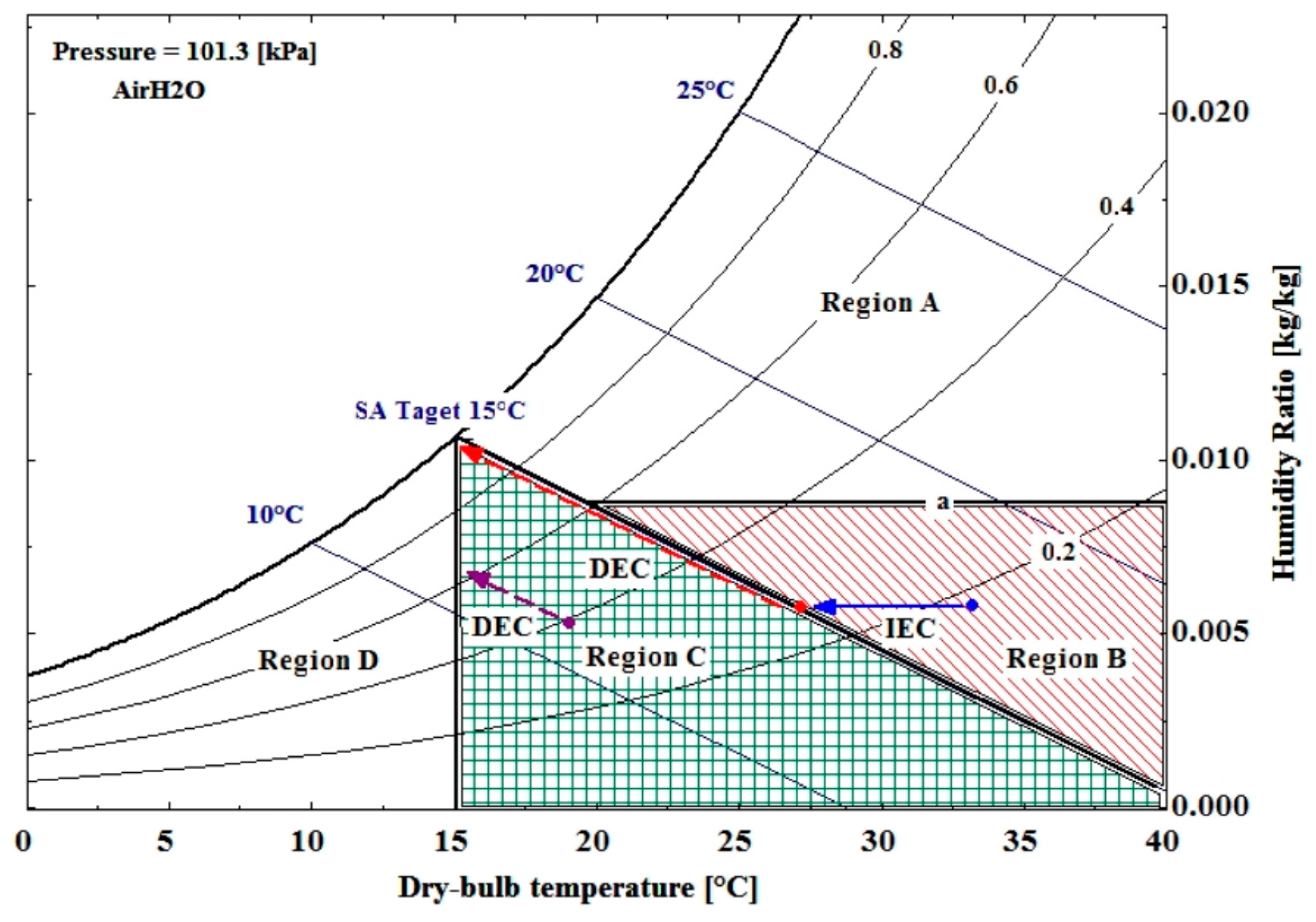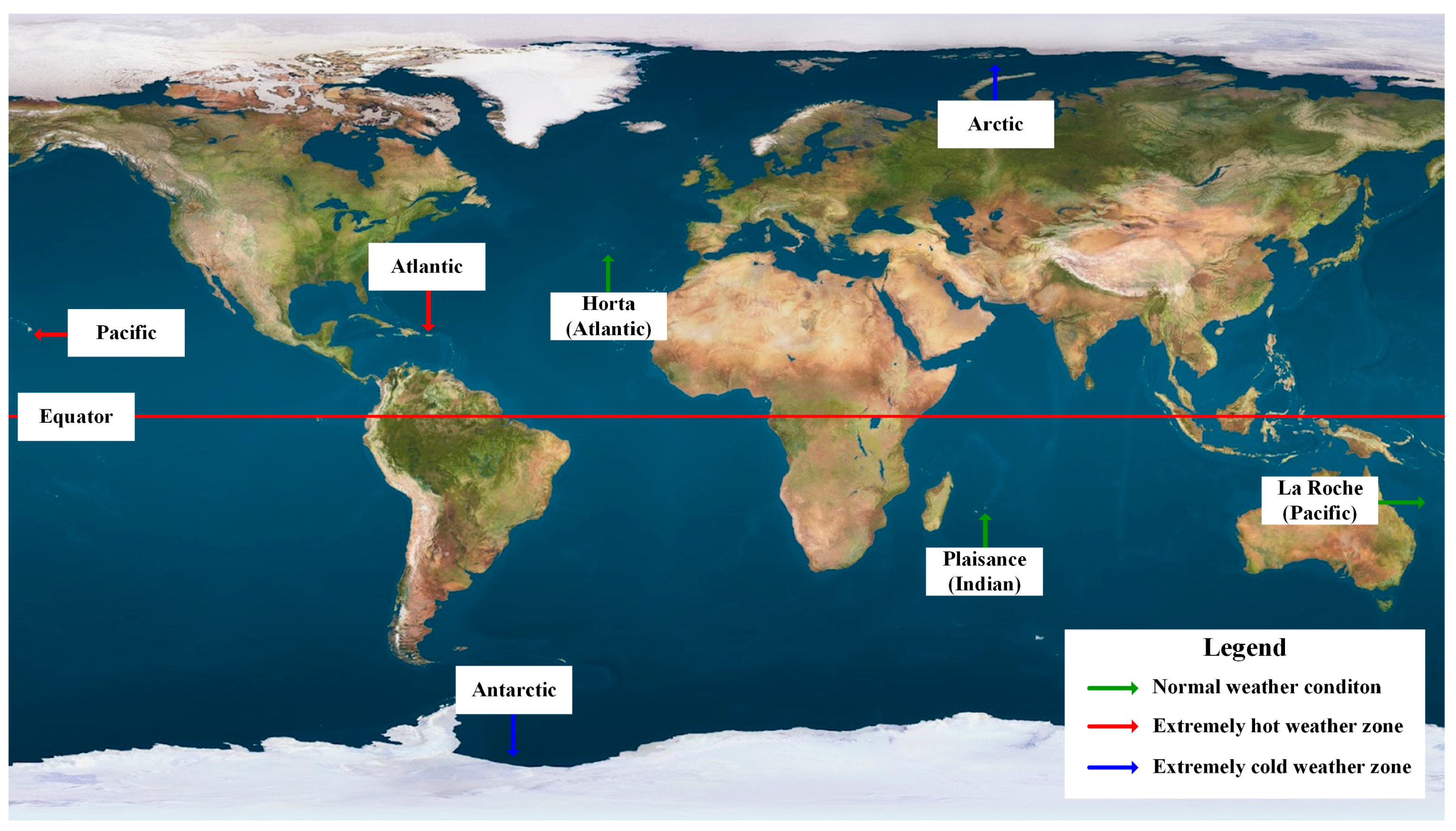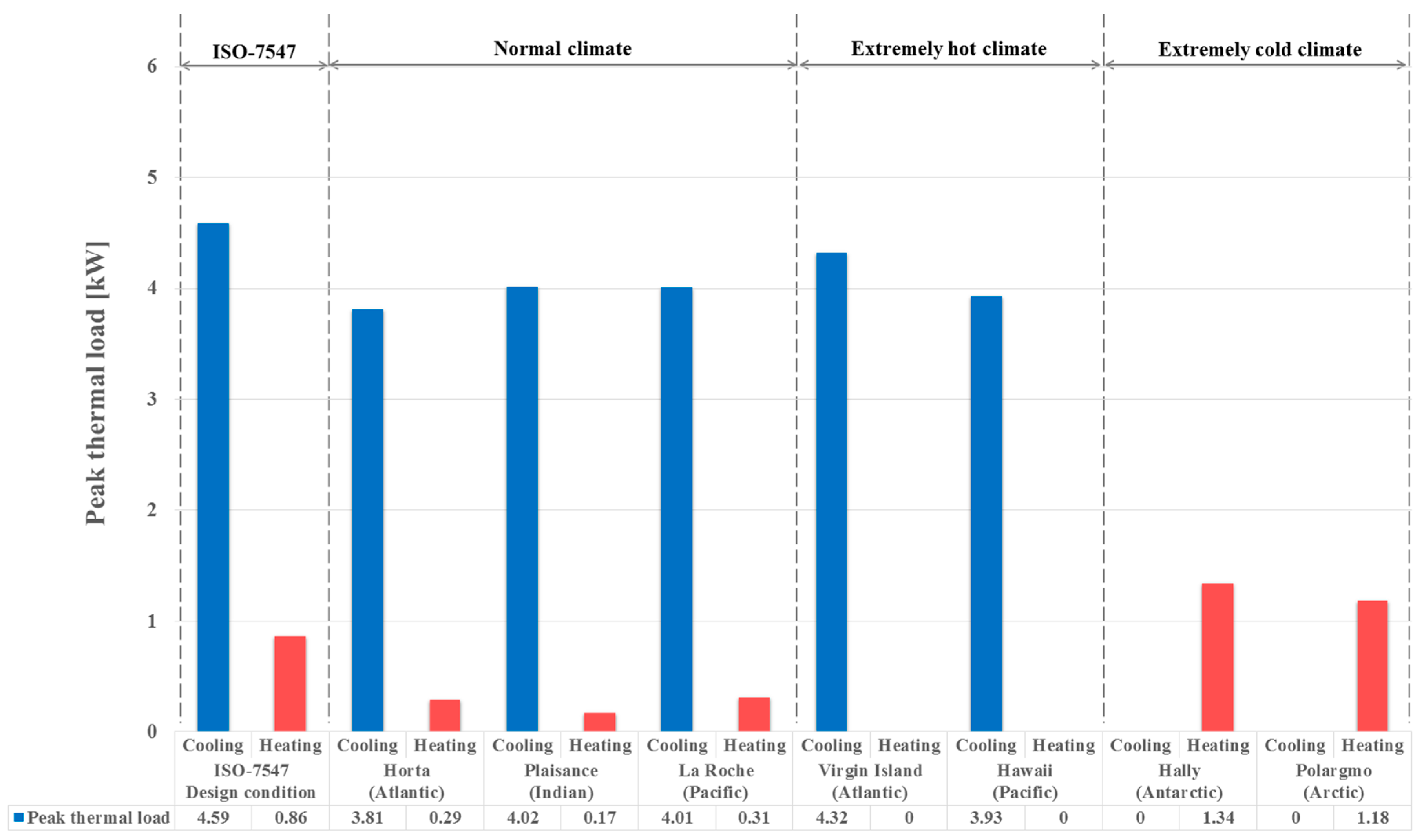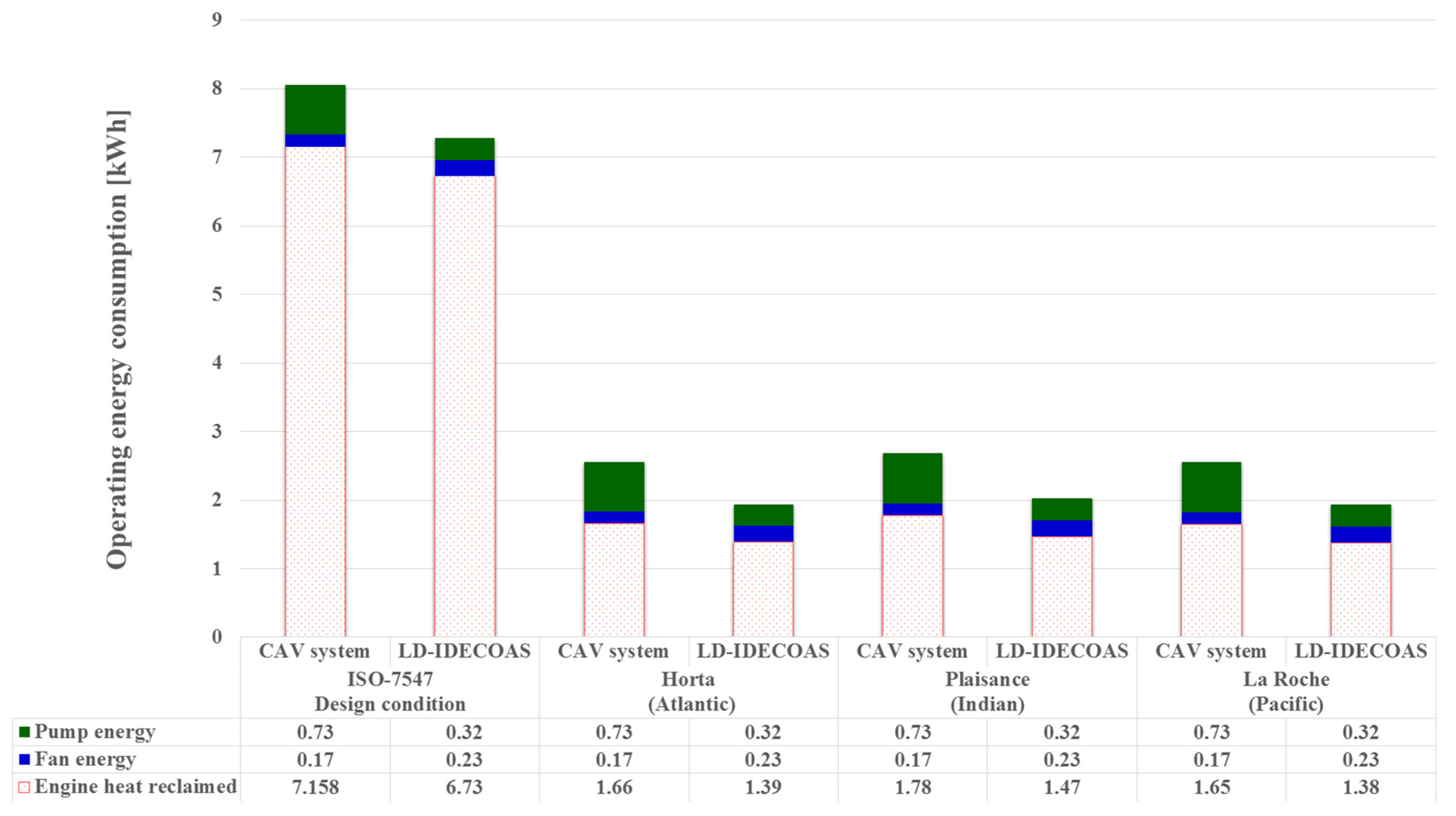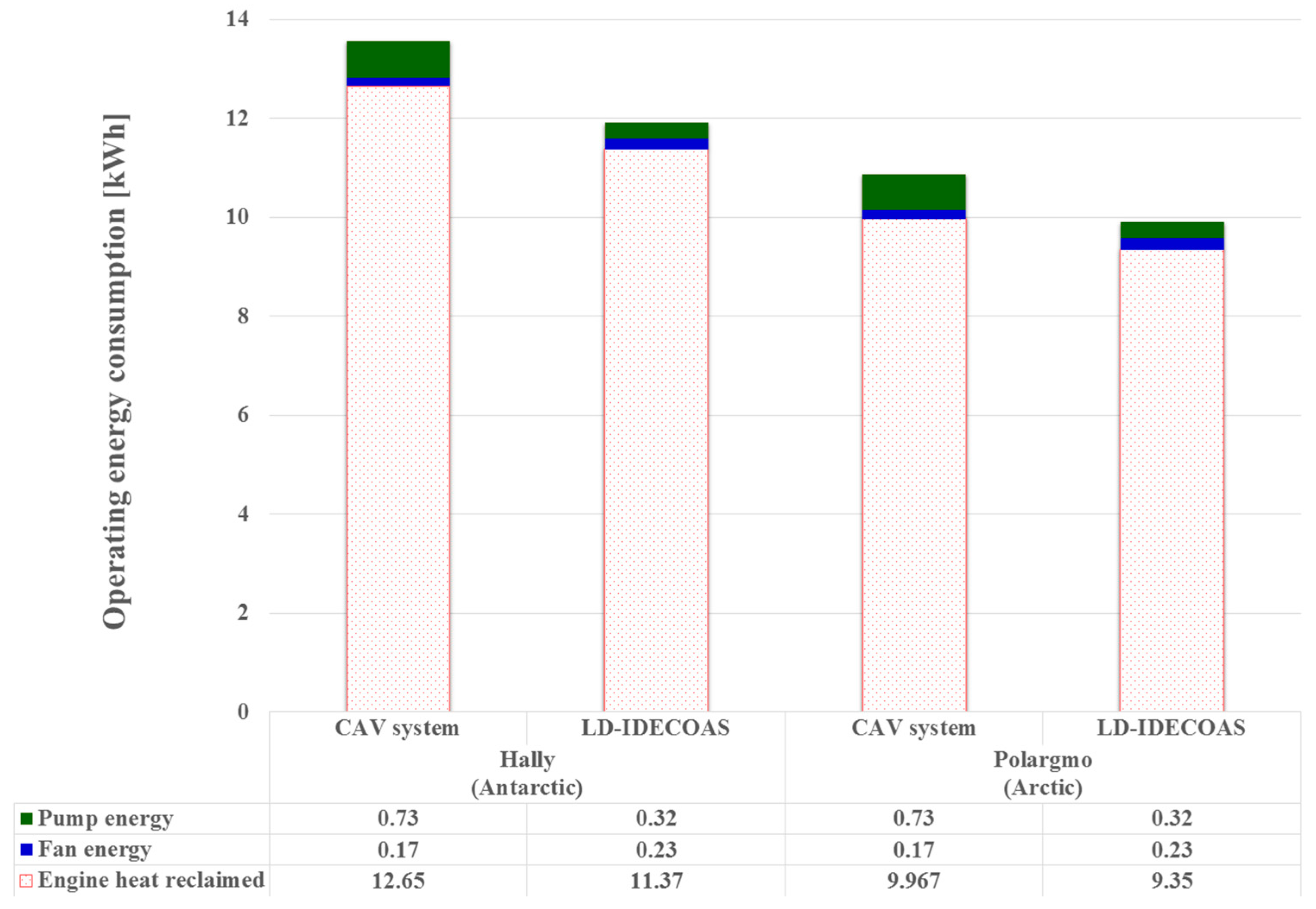3.3.1. Constant Air Volume System
Figure 6 shows the configuration of the conventional CAV system considered in this study. The energy consumption of the CAV system was calculated based on the predicted peak thermal loads of the model space. Based on ISO-7547, the cooling set-point of the conditioned space was 27 °C with 50% relative humidity, and the heating set-point was 22 °C, without considering humidity control. In the cooling operation, the supply air was cooled, and subsequently dehumidified using the cooling coil. The supply air flow rate was maintained at 1200 m
3/h, wherein 40% of the supply air flow (i.e., 480 m
3/h) comprised fresh outdoor air introduced for ventilation (in accordance with ISO-7547). The conventional CAV system was able to meet the thermal load by means of supply air temperature control, while the design supply air temperature was 13 °C. A DOE-2 air-cooled chiller model with a coefficient of performance (COP) of 2.95 was applied in this simulation [
21,
22]. The energy of the chiller was calculated using Equation (3), considering the part load ratio of the chiller. The power demand of the reference chiller was estimated using Equation (4), based on the reference chiller capacity and COP.
where
is the reference chiller power in (W).
where
is the reference chiller capacity in (kW).
Alternatively, the water-side free cooling with seawater was considered during the chiller operation to reduce the energy consumption of the chiller. The temperature of seawater in the summer was assumed to be 20 °C, based on the literature [
23]. The efficiency of the SHE was set to 70%. To estimate the energy consumption of the seawater pump using Equation (5), the pump was assumed to be a constant-flow pump with an efficiency of 60% and a head of 20 m [
22].
where
is the volume flow rate in (m
3/s),
is the pump head in (m), and
is the pump efficiency in (-).
The HC was activated as a reheating coil to meet the supply air conditions and adjust the thermal load of the conditioning space. During operation in the winter season, the HC was operated to maintain the heating temperature set-point of the supply air (i.e., 45 °C), with a design supply air flow rate of 400 m3/h. The intake flow rate of the outdoor air for ventilation was 160 m3/h (i.e., 40% of the supply air flow rate).
3.3.2. LD-IDECOAS
Considering the energy consumption of the LD-IDECOAS in summer conditions, the outdoor air is in region A on the psychrometric chart (
Figure 2). Thus, the equipment present within the LD-IDECOAS should be operated. To meet the supply air condition (i.e., 15 °C), the induced outdoor air is dehumidified using the LD, before entering the IEC. After dehumidification, the process air enters the IEC for sensible cooling, and subsequently enters the DEC for adiabatic cooling, to meet the supply air conditions. The outdoor air conditions in winter correspond to region D on the psychrometric chart. For outdoor air conditions within this region, the LD system of the LD-IDECOAS is bypassed. The heat recovered from the exhaust air stream preheats the induced outdoor air in the IEC. The IEC operates in a similar manner to a SHE, without spraying water into the secondary channel of the IEC. When the supply temperature is not sufficiently high to meet the supply air conditions after IEC and SHE operations, the HC is operated to ensure the high sensible heat of the supply air condition (i.e., 45 °C).
The process air condition at the outlet of the LD unit (
) was determined using Equation (6), whereas the outdoor air temperature (
), inlet temperature of the solution (
), and temperature efficiency were known values (
). In addition, the DBT condition of the process air at the outlet of the IEC (
) was calculated using Equation (7), as the efficiency of the IEC (
) was known. In this study, the efficiency of the IEC was assumed to be 70% [
24]. Moreover, the inlet WBT condition of the secondary air (
) was considered the same as that of the WBT condition of the exhaust air (
Figure 1). Similarly, the DBT condition at the outlet of the DEC (
) was the target DBT condition of the supply air (
), which was estimated using Equation (8) for a given efficiency of the DEC (
); herein, the efficiency of the DEC was assumed to be 95% [
24]. The humidity ratio of the outlet condition of the LD unit (
) was determined using Equation (9), for an assumed dehumidification efficiency of the LD unit (
). Based on the literature, the temperature efficiency of the LD unit (
) was found to be similar to its dehumidification efficiency (
) [
25,
26].
The dehumidification effectiveness of the LD was evaluated using an existing model (Equations (10) and (11)) found in the literature [
27,
28]. The model is an empirical model applicable to an LD unit with a lithium chloride (LiCl) solution. In addition, the regeneration effectiveness of the LD unit was determined using Equations (12)–(14), by employing the coefficients listed in
Table 5 [
29]. The thermodynamic characteristics of the LiCl solution were obtained from the literature [
20,
30].
where:
where:
To evaluate the system performance of the LD unit, the operating conditions of the system were adjusted using the initial conditions. The LD unit was modeled with the LiCl solution as the desiccant material. An inlet temperature of 30 °C (obtained by adjusting the seawater free cooling) and an inlet concentration of 40% were considered for the solution. The thermal load of the regeneration energy of the desiccant solution was considered, depending on the moisture removal rate. The weak desiccant solution must be heated to the regeneration temperature (60 °C) before entering the regenerator.
Alternatively, to estimate the fan energy consumptions of the proposed system, the air-side pressure drop in each system component was considered.
Table 6 presents the static pressure drops of each component under a design flow rate of 1200 m
3/h [
22,
24,
31,
32]. The fan energy consumptions were estimated using Equations (15) and (16) for constant and variable flow fans, respectively.
where
is the density of air in (kg/m
3) and
is the fan efficiency in (-).
where
is the volume flow rate in (m
3/s).
To estimate the energy consumption of the pump in the proposed system, the head of each pump was determined based on the design flow rate of each pump required in the proposed system. The pump energy consumptions were estimated using Equations (5) and (16) for constant and variable flow pumps, respectively. The efficiency of each pump was assumed to be 60%.
Table 7 presents the head of each pump considered in this study.
During the operation of the LD unit, a regeneration heat source should be supplied to meet the required solution heating load. In this study, the engine waste heat was considered to be the heat source for regenerating the desiccant solution. Generally, the Rankine cycle is employed for the application of waste-heat recovery to understand the thermal characteristics based on the theory of thermodynamics. The organic Rankine cycle is a promising technology, wherein the waste heat can be used as a renewable heat source without CO
2 emissions. In the present simulation, a prediction model for organic Rankine-cycle heat recovery was used to estimate the quantity of waste heat [
15,
16,
17,
18]. To estimate the waste-heat recovery, the efficiency of the organic Rankine cycle was assumed to be 10% and 70% of the efficiency of the waste-heat recovery [
18]. Based on this estimation, engine waste heat can be reclaimed at 80 kW/h. Consequently, both of the considered HVAC systems (i.e., the LD-IDECOAS and CAV system) would be able to meet the required system heating load.
